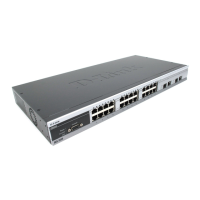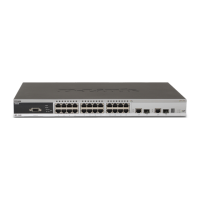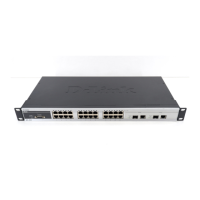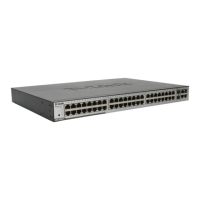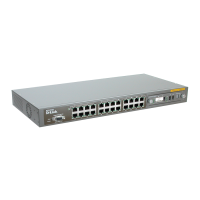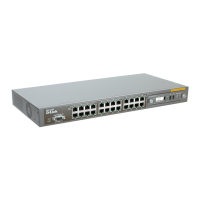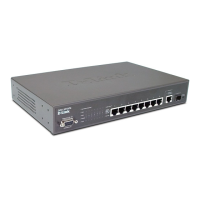DES-3550 Layer 2 Fast Ethernet Switch User’s Guide
15
This stand-alone Switch enables the network to use some of the most demanding multimedia
and imaging applications concurrently with other user applications without creating
bottlenecks. The built-in console interface can be used to configure the Switch’s settings for
priority queuing, VLANs, and port trunk groups, port monitoring, and port speed.
Features
• IEEE 802.3 10BASE-T compliant
• IEEE 802.3u 100BASE-TX compliant
•
IEEE 802.1p Priority Queues
• IEEE 802.3x flow control in full-duplex mode
• IEEE 802.3ad Link Aggregation Control Protocol support.
• IEEE 802.1x Port-based and MAC-based Access Control
• IEEE 802.1Q VLAN
•
IEEE 802.1D Spanning Tree and IEEE 802.1W Rapid Spanning Tree support
• Access Control List (ACL) support
• Single IP Management support
•
Access Authentication Control utilizing TACACS, XTACACS, and TACACS+
• Dual Image Firmware
• Simple Network Time Protocol support
• MAC Notification support
• Asymmetric VLAN support
•
System and Port Utilization support
• System Log Support
• High performance switching engine performs forwarding and filtering at full wire speed,
maximum 14, 881 packets/sec on each 10Mbps Ethernet port, and maximum 148,810
packet/sec on 100Mbps Fast Ethernet port.
• Full- and half-duplex for both 10Mbps and 100Mbps connections. Full-duplex allows the
switch port to simultaneously transmit and receive data. It only works with connections to
full-duplex-capable end stations and switches. Connections to a hub must take place at half-
duplex.
• Supports broadcast storm filtering
•
Non-blocking store and forward switching scheme capability to support rate adaptation
and protocol conversion
•
Supports by-port Egress/Ingress rate control.
• Efficient self-learning and address recognition mechanism enables forwarding rate at wire
speed
• Supports port-based enable and disable

